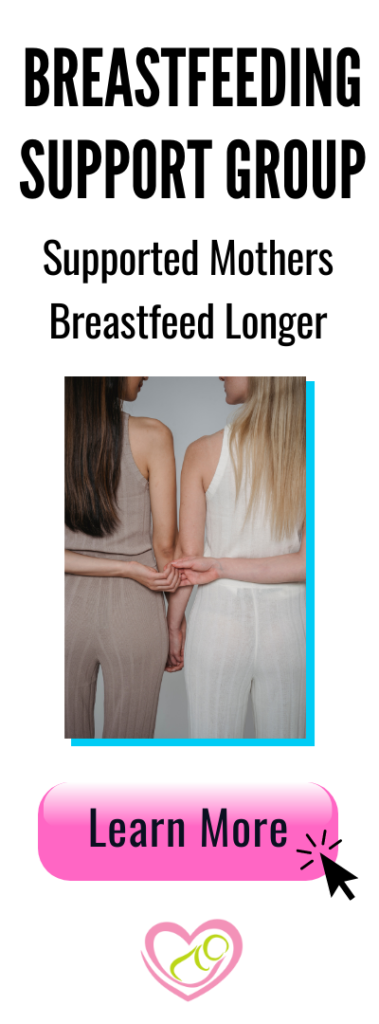How To Breastfeed A Congested Baby
December 17, 2021 2024-06-20 16:38How To Breastfeed A Congested Baby
How To Breastfeed A Congested Baby

Having a congested baby can be stressful. We do our best to keep our little ones safe and healthy, but they all catch a cold or other virus at some point. And let’s be real…in all likelihood, you will also get sick! Luckily, you transfer antibodies through your breast milk to boost your baby’s immune system, which means the duration of your baby’s illnesses will be shorter. Click HERE for more about dealing with your own illness as a breastfeeding parent.
Babies tend not to eat well when they don’t feel well. The act of sucking can be painful if their ears are blocked or if they have a sore throat. You may be worried that your baby isn’t getting enough of what they need, but rest assured- this is completely normal. Shorter, less frequent feedings may cause your baby’s weight gain to slow down, but it should begin to increase once the illness passes. However, it is important to be aware of the signs of dehydration, and always trust your gut. Call your pediatrician if you feel like something may be seriously wrong with your baby.
Here are 5 tips to help get you through your baby’s illness:
1- Protect Your Milk Supply
I know you’re worried about your baby, but we’re starting here because losing your supply is a big deal. With baby wanting shorter and/or less frequent feedings, your body will naturally respond by reducing production. Additionally, you are probably losing sleep, and if you are also sick or fighting something, the fatigue and physical stress of illness can take a toll on your milk supply. Once again, rest assured that this is temporary! You’ll want to protect your supply as best you can while riding out the illness, but please give yourself grace, especially if you’re not feeling well.
5 ways to protect your supply:
- Rest as much as possible. Easier said than done, I know, but the recuperative power of rest is huge. Ideally, have a support person nearby who can help with everything else, and just bring the baby to you for feedings.
- Stay hydrated. This is a great time to add in some electrolytes to improve your hydration. Learn more HERE. try feeding your baby more frequently in order to get their volume in.
- Pump when your baby skips a feeding or immediately after a short feeding. This will remind your body that it still needs to produce all the milk.
- Get skin-to-skin. Direct body contact with your baby elicits the hormonal responses responsible for both milk production and triggering your letdown to release what’s in there! It also gets babies in the mood to feed.
- Avoid medicines that affect milk supply. For what you can take safely, click HERE.
2- Use Saline Drops And Aspirator
Before feeding your baby, put a few saline drops in your baby’s nose and then use a nasal aspirator to help clear out the congestion. Be sure to follow the package directions!
A bulb syringe is the “standard” aspirator. We recommend also trying the NoseFrida for severe congestion. It is designed to suck out the mucus and germs more efficiently than a bulb syringe. *Please use sparingly, as excessive use may cause inflammation in your baby’s nasal passages.* It is dishwasher safe, BPA free, and pediatrician recommended.
Make sure to do this prior to feeding your baby. Adding drops into their nose and using a syringe can trigger their gag reflex, and we don’t want baby to spit up everything they just ate!
3- Breastfeed In An Upright Position
Allow gravity to do the work! Feeding your baby at an upright angle allows the congestion to move downwards and out the nose, rather than being stuck in the nasal passages when lying down. The football position is good for angling your baby, or you can also nurse in a baby carrier. For night time feeds, you can prop yourself up on pillows.
4- Breastfeed By The Shower
5- Cup or Syringe Feed
Remember, your breastmilk is designed to meet your baby’s needs and is constantly changing to do so. When your body is exposed to an infection, it will make antibodies that will be found in your milk to combat the pathogen. Leukocytes, which help boost immunity, naturally increase in your milk supply when your baby is sick. This is why it is so important for you to continue to nurse your baby; you are providing essential nutrients to your baby to combat their illness!
Stay strong, mama. You got this!
***The information provided on our website is intended solely for general educational and informational purposes only. It is neither intended nor implied to be a substitute for professional medical advice. Always seek the advice of your physician for any questions you may have regarding your or your child’s medical condition. Never disregard professional medical advice or delay in seeking it because of something you have received in this information.***
Search
baby bottle feeding breastfeeding breastfeeding latch breastfeeding pain breast milk storage breast refusal bugs cedar park regional clogged duct contraceptives daycare discharge doula engorgement exercise foremilk galactogogues hindmilk hospital how to latch baby labor low milk supply low supply massage mastitis newborn care nursing strike nutrition pacifiers plugged duct plugged ducts postpartum prenatal pumping relactation siblings sleep sore nipples breastfeeding suck training tax breaks thrush tongue tie video weaning
Search



